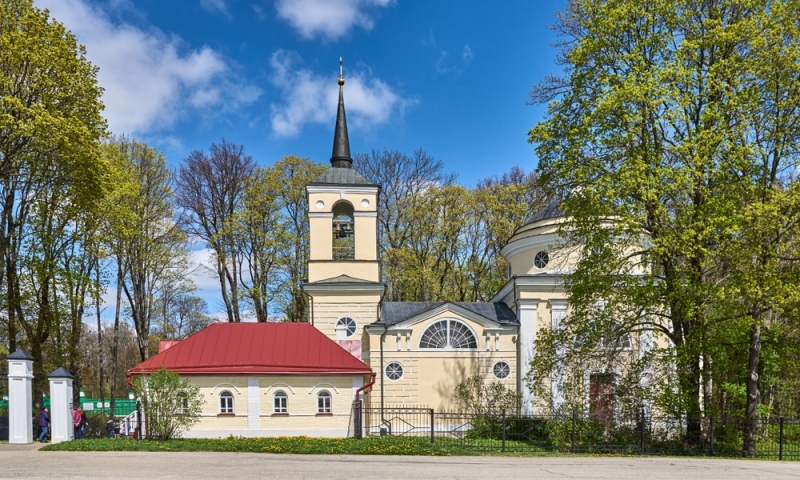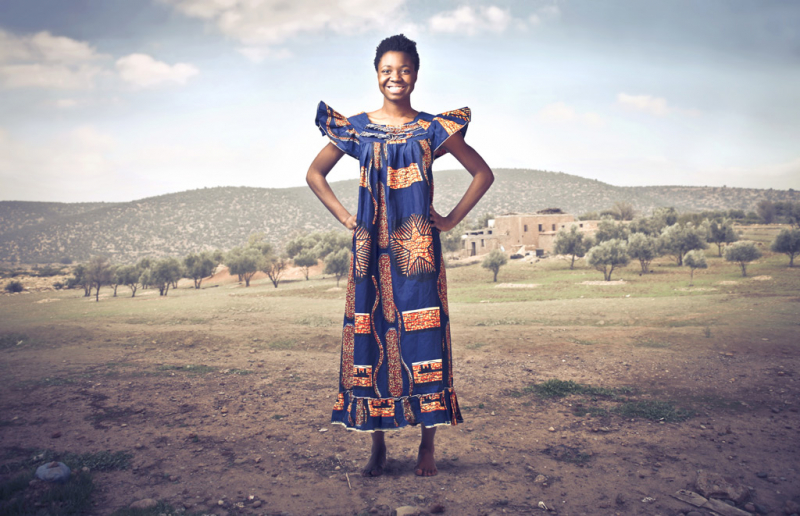
In the 19th century, the Oryol province was one of the largest in the Russian Empire. Famous writers and poets were born and lived in these lands: Ivan Turgenev, Afanasy Fet, Leonid Andreev, Mikhail Prishvin, Nikolai Leskov. It is not surprising that the weekend in this city will be filled with a creative atmosphere, and the route will be especially interesting for lovers of Russian literature. We are sharing a plan for a short trip to Oryol and the surrounding area.
How to get there
You can get from Moscow to Orel by train, bus or car. Trains depart from Vostochny, Kursky, Paveletsky and Kievsky stations. Travel time will take from four to nine hours depending on the chosen flight. Buses run from Novoyasenevo and Orekhovo bus stations; travel time is from six to seven and a half hours. By car you can get to Orel in about five hours along the M-2 highway.
Where to stay
Apart-hotel “Astoria Club” (rating 9.3) – from 2,000 rubles per night*.
Three-star hotel “Tete-a-Tete” (rating 9.5) – from 2,400 rubles per night*.
Five-star hotel complex “Grinn” (rating 9.9) – from 3,400 rubles per night*.
What to see

Oryol is a small city, so we recommend devoting the first day to the main attractions, and on the second day visiting several interesting places in the area.
Railway station and art object “Eagle”

It’s symbolic to start getting to know the city from the station, even if you didn’t come by train. Orel was supposed to become one of the largest transport hubs of the Russian Empire, but plans changed as a result of the events of 1917. The modern station building was erected in the 1940s on the site of a previous building that was blown up by the Germans during the Great Patriotic War. Its main decoration is stained glass windows with portraits of famous Oryol writers. On the square in front of the station there is a monument to the 450th anniversary of the Eagle, depicting a majestic bird on a ball. Previously, in its place stood a huge art object in the form of an eagle made of branches. Now he can be seen on the outskirts of the city at the entrance to block 909.
Memorial House-Museum of N. S. Leskov
The house, which today houses the only museum of the writer N. S. Leskov in Russia, was part of his father’s city estate. The interiors immerse guests in the atmosphere of provincial noble life, which is described in the works of the author. The office from the writer’s apartment in St. Petersburg has been recreated here. The museum staff collected and preserved original items, photographs, manuscripts and lifetime editions of Leskov. The exhibition is complemented by a collection of paintings by Kukryniksy, Kustodiev and other artists. Currently, the house can only be viewed from the outside, as it is under restoration, but the exhibition has been temporarily moved to the house of T. N. Granovsky and is open to visitors. Find the schedule on the official website of the museum.
Oryol United State Museum named after. I. S. Turgeneva

It includes several literary and memorial museums. Thus, in the house of the former vice-governor of Orel, the I. S. Turgenev Museum was organized, where a large library and an office were transported from the family nest of the Turgenev family in Spassky-Lutovinovo.
And on 2nd Pushkarskaya Street the wooden house of the family of the writer Leonid Andreev, where he spent his childhood and youth, has been preserved.
In one of the old noble mansions, the atmosphere in which the first Nobel Prize laureate in Russian literature, I. A. Bunin, lived was recreated. The exhibition contains personal belongings and manuscripts that reveal the author’s creative path.
In the house of the medievalist historian T. N. Granovsky, an exhibition from the N. S. Leskov Museum is temporarily located. On the official website you can find out the opening hours of branches and sign up for interactive excursions.
Square “Noble Nest”

The title of one of the fundamental works of I. S. Turgenev, “The Nest of Nobles,” has become a household name in Russian culture. The novel forms a textbook image of the way of life of a provincial noble estate. It is believed that the prototype of the described locations was the estate, on the site of which there is now a historical monument, the “Noble Nest” public garden. From the observation deck on the cliff there are beautiful views of the Orlik River and the opposite bank. One of the symbols of the city is also located here – the snow-white rotunda. It is currently undergoing restoration, which is scheduled to be completed in September 2023.
Lenin Street and Leninsky Bridge
The central pedestrian street looks very formal. On both sides of the modern urban space are ancient mansions housing cafes, bars and shops. The house at number 32/34 is especially interesting: from a certain angle it appears flat. Lenin Street ends with a striking bridge, which offers the best view of one of the most beautiful buildings in the city – a commercial bank built in neo-Russian style.
Monument to Leskov and his characters
An unusual monument has been erected on the Arts Square: the figure of the writer sitting on a bench is surrounded by columns topped with small sculptures of recognizable characters from his works. Among them are Lefty, the toupee artist Arkady and the merchant’s wife Katerina Izmailova.
Gostinaya Street

Another transport artery of Orel, on which historical buildings are located. Shopping arcades of the 19th century (building 2) and the Oryol commercial bank built in 1900 (building 6) will help you get an idea of the old city.
Park “Oryol Fortress”

On the picturesque arrow at the confluence of the Orlik and Oka rivers, the Oryol Fortress park is located. It is believed that it was in this place that the city of Orel was founded, as memorial objects remind of this – a memorial sign on a stone and a high stele installed in the 1960s. At the entrance to the park stands the Epiphany Cathedral. The oldest stone building in the city dates back to the 18th century. Since 1937, its premises have been occupied by an anti-religious museum. During the fascist occupation, the temple was open for prayers and operated until the 1960s, when it was turned into a puppet theater. Since the 1990s, the cathedral has been restored, services there have been resumed.
Children’s Park
Recently completed renovations have transformed a popular family destination into a trendy urban space. In addition to traditional attractions and entertainment, there are themed playgrounds for children, a concert area, as well as modern recreation areas and a fountain decorated with cute concrete horse figurines.
House of merchant Appolonov
One of the most beautiful stone buildings in Orel was built at the beginning of the 19th century by the wealthy merchant V.V. Apollonov. The first floor is decorated with large glass showcases. There was a chic grocery store here with delicacies – crabs, aromatic tea, overseas fruits and wines. Contemporaries were surprised not only by the goods, but also by the richly stuccoed interiors of the trading floors.
Collectible Doll Museum

The private collection contains hundreds of figures and figurines of Russian and foreign production. Some rare specimens are very valuable. The exhibition includes figurines of famous people, characters from famous films and fairy-tale heroes, as well as popular classic toys. It’s a special pleasure to look at the doll’s outfits, many of which can be called masterpieces of tailoring. The small museum’s opening hours are irregular, so it’s best to check with the official team before visiting.
Sculpture “Official and Entrepreneur”
An unusual photo point along the route is a sculpture depicting an official and an entrepreneur with their foreheads resting on a watch. Despite the apparent confrontation, according to the creators, the two stooped figures symbolize the speedy reconciliation of the parties in the name of a common cause.
What to see in the area
On the second day, we advise you to rent a car and go to the iconic “Turgenev” places, descriptions of which can be found on the pages of the author’s works.
Spasskoye-Lutovinovo

The ancestral nest of the Turgenev family is of key importance both for the Oryol region and for the history of Russian literature. Ivan Sergeevich spent his childhood on the estate, and then returned here several times in adulthood. The local atmosphere contributed to fruitful creativity. The author wrote here “Fathers and Sons”, “On the Eve” and “The Noble Nest”. A description of the surrounding area can be found on the pages of the “Notes of a Hunter” series. Today, the territory of the estate is part of the State Memorial and Natural Museum-Reserve named after I. S. Turgenev. The main house, which burned down at the beginning of the 20th century, was restored in the 1980s. The writer’s original belongings were placed in the 19th-century interiors. The estate often hosts themed festivals and celebrations. The museum also offers weekend construction programs for guests. Participants can not only visit the exhibition, but also ride boats and horse-drawn carriages, take part in quests and an interactive photo shoot. To register for the program, you must submit an application by phone on the official website of the museum.
How to get there: from Orel along the M-2 highway to Mtsensk, then along the road 54K-411 to the turn to Bastyevo, and from there to Spassky -Lutovinovo. Travel time is about one and a half hours. You can also get to the estate by bus from the Oryol bus station.
National Park “Oryol Polesie”

According to one of the legends, it was in these forests that the Nightingale the Robber hunted. Today, visitors to the park can look for the epic oak tree where he lived, or wander along Turgenev’s paths among centuries-old pines, because it was here that some of the events from the series of stories “Notes of a Hunter” took place. To choose a route and get a ticket, you must contact the park’s visitor center in advance. The natural habitat of rare animals – the bison and the Russian muskrat – is protected here. On a tour of the zoo complex next door, you can learn about the restoration of the population of these species.
How to get there: from Orel along the Naugorskoye highway to Znamensky, then along the highway to Lgov, and then along the road 54K-395 to the village of Zhudersky .
*Prices are current at the time of publication.

